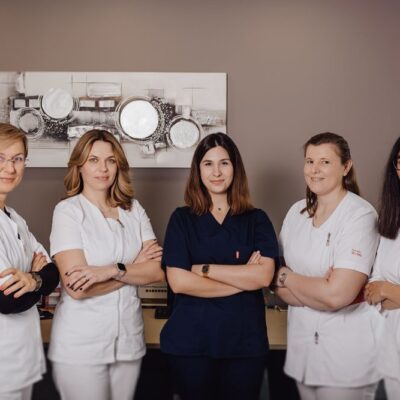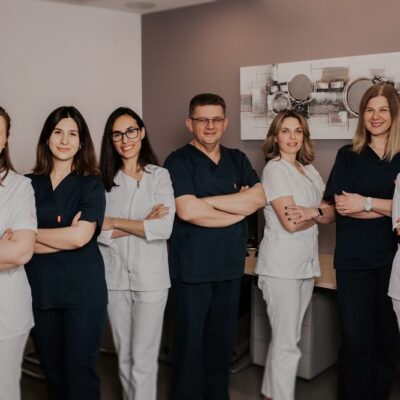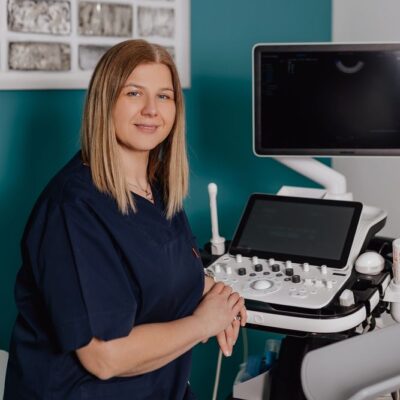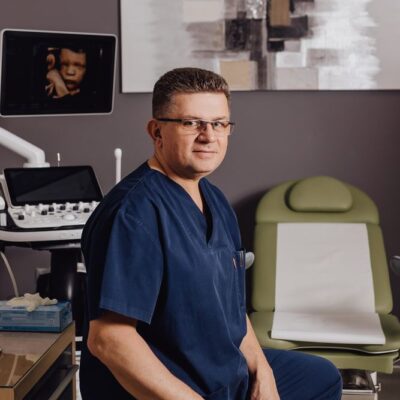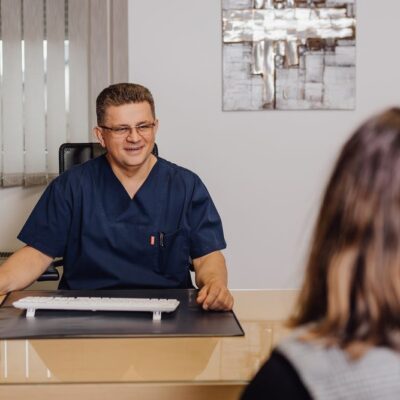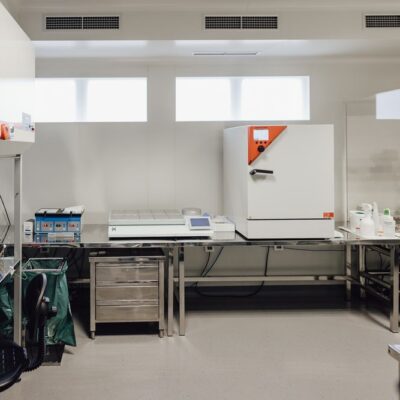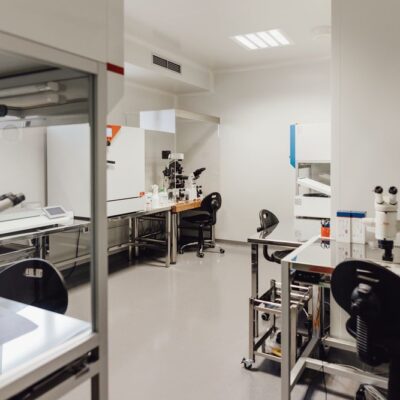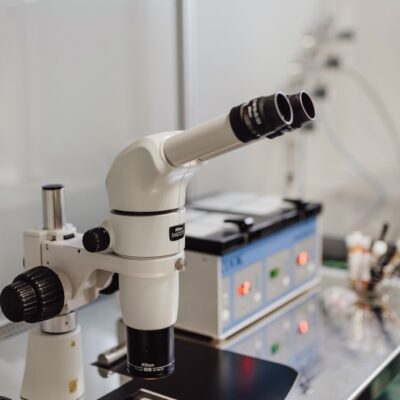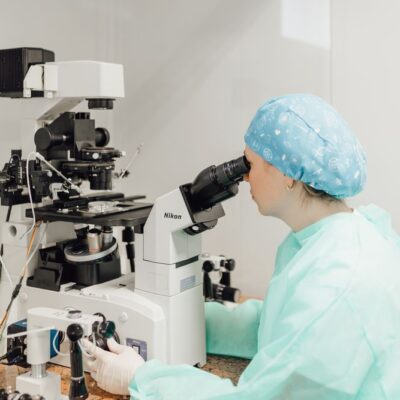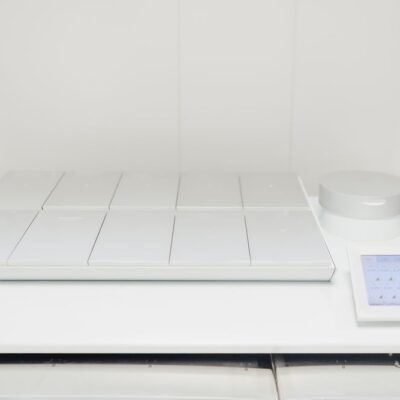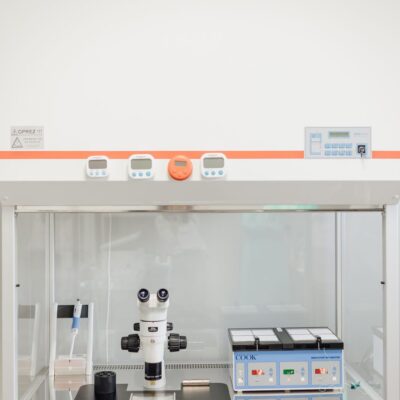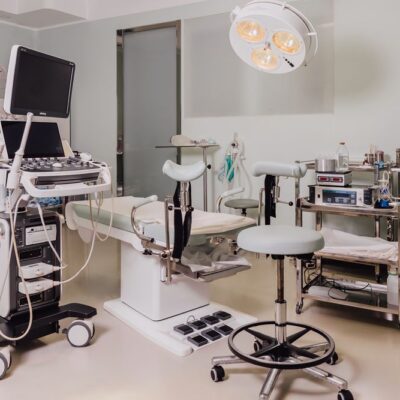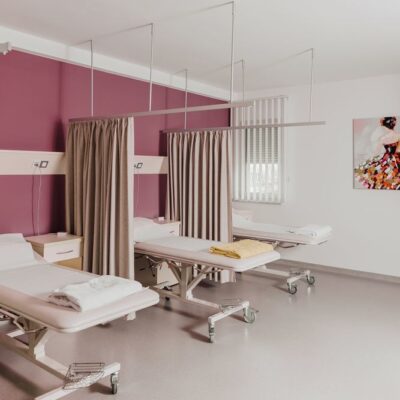
Assisted Reproductive Technology
Assisted Reproductive Technology (ART) is a set of methods aimed at treating infertility in couples who are unable to conceive after more than one year of regular, unprotected intercourse, when other methods of treatment have proven ineffective.
Contrary to uninformed opinion, there is nothing “artificial” about this process. The reproductive cells of the couple are combined (woman’s eggs fertilised with man’s sperm), and their embryos are returned to the woman’s uterus. The ART methods simply allow us to perform some of the steps in pregnancy outside the woman’s body, that is, in vitro instead of in vivo (egg fertilisation and embryo culture).
Considering the rising trend in delaying childbearing until after the age of 30, when the chance of conceiving is between 15% and 25% in any particular month, as well as different causes of infertility for both partners, it is no surprise that around 17% of couples struggle with infertility.
The causes of infertility are equally distributed between women and men in percentage terms.
Causes of female infertility
- Age (the probability of getting pregnant decreases with age)
- Blocked fallopian tubes
- Anovulation
- Diminished ovarian reserve
- Endometriosis
- Hormonal imbalances
- Bacterial infections
Causes of male infertility
- Poor sperm motility, low sperm count, and abnormal sperm morphology
- Hormonal imbalances
- Varicocele
- Bacterial infections
- Chromosomal abnormalities
ART methods
The ART methods we apply at Škvorc Polyclinic include infertility diagnostic testing, sono-hysterosalpingography (sono-HSG), semen analysis, intrauterine (IUI) or artificial insemination with husband’s semen (AIH), fertilisation outside the body which includes in vitro fertilisation (IVF) and intracytoplasmic sperm injection (ICSI), egg and embryo freezing, and frozen embryo transfer (FET).
Services
In infertility diagnostic testing, we apply an individual approach, and choosing the most suitable ART method for a couple depends on the diagnostic results of both partners.
The first step in infertility treatment is a specialist consultation with both partners.
The specialist will take medical history of both partners and suggest additional necessary testing to determine the cause of infertility and choose the best treatment method.
If other, simpler options of infertility treatment are ruled out, the specialist will suggest one of the ART methods.
Necessary tests for women:
- Gynaecological examination, Pap smear, transvaginal ultrasound (on days 8–12 of the cycle)
- CBC, BG, insulin, HOMA index, total bilirubin, AST, ALT, GGT, urea, creatinine, fibrinogen, PT, APTT, Na, K
- Urine culture and antibiogram
- Hormonal status: estradiol, FSH, LH, prolactin, Anti-Müllerian Hormone (AMH) (on days 2–5 of the cycle)
- Thyroid hormones (FT4, TSH)
- Cervical swabs (aerobic bacteria, Chlamydia, Mycoplasma/Ureaplasma) and antibiogram
- Breast ultrasound for patients over the age of 30
- Blood type and Rh factor, indirect antiglobulin test, markers for hepatitis A, B, and C, HIV-1 and HIV-2, syphilis test
- Sono-HSG
Necessary tests for men:
- Microbiological urine analysis (first urine in one sterile container, and mid-stream urine sample of the first morning urine in the other sterile container (aerobic bacteria, Mycoplasma/Ureaplasma, Chlamydia) (not older than 6 months)
- Semen analysis
If the results of the semen analysis are not optimal:
- Urological examination with testicular ultrasound
- Hormone tests (testosterone, FSH, LH, estradiol, TSH, FT4, inhibin B)
- Sperm DNA fragmentation
- Karyotype test, Y-chromosome deletion testing
- Testicular biopsy
Other necessary documents prior to the ART procedure:
- Copy of a marriage certificate or a notarised declaration of cohabitation
- Copies of ID cards and personal identification numbers (OIB) of both partners
- Copies of health cards and D1 referral form (for ART procedures covered by the Croatian Health Insurance Fund)
Ultrasound hysterosalpingography (Sono-HSG) is a procedure for assessing the patency of the fallopian tubes.
A contrast dye is injected into the uterine cavity via a catheter, allowing for ultrasound imaging to examine the contour of the uterine cavity and the patency of the fallopian tubes.
This procedure is performed in the first phase of the cycle, immediately after the period,
and requires fresh and normal cervical swab and Pap smear results.
Semen analysis is a laboratory test of the semen, that provides valuable information on sperm quality and male fertility. It is a primary method of assessing male fertility, and helps to determine whether the sperm is capable of fertilising an egg.
The process of preparing the sperm for the ART procedure and examining it for the purpose of semen analysis differs in terms of where the laboratory testing is performed, while all the other procedures, used media and material, are identical.
The partner can produce the semen sample at home (in which case, he signs a form confirming that he has produced the sample) or at the Polyclinic.
For specimens produced at home, no more than 45 minutes can pass from the time of producing the specimen until the appointment at the Polyclinic. The container must be closed tightly, wrapped in aluminium foil, and not heated nor cooled.
The semen sample should be collected into a wide-lid sterile urine specimen container (available at the Polyclinic or a pharmacy).
Before collecting the sample, a period of ejaculatory/sexual abstinence of no more than 3 days, and no less than 1 day, should be maintained.
On the day before collection, it is recommended to drink more liquid than what is usual for the patient.
The patient is to empty his bladder of urine prior to collection, and wash his hands and genital area, but without using a sanitiser.
The sample is to be collected by the patient, exclusively by self-masturbation.
The semen analysis records the ejaculate volume, viscosity, appearance, liquefaction, and pH. The presence of agglutination, leukocytes, and epithelial cells, is examined. The analysis measures sperm concentration, the percentage of sperm that are motile, their vitality, and the percentage of sperm with abnormal morphology.
For the IUI, IVF and ICSI procedures, the sample is prepared by the swim-up, density gradient, or microfluidic sperm sorting methods, depending on the medical history of the couple, the procedures already performed, and the wish of the patients.
NATURAL CYCLE
The ART procedure can be performed in line with the natural cycle, which does not require the use of hormonal supplements. Although this puts less stress on the woman's body, only one egg can be retrieved (or, more rarely, two). Also, the follicle often ovulates before aspiration, or no egg develops inside the follicle. Therefore, the fertilisation and embryo transfer rates, and ultimately the pregnancy rate, are considerably lower compared to stimulated cycles.
STIMULATED CYCLE
In stimulated cycles, the woman takes ovulation induction medications that stimulate the ovaries to produce more eggs. There is a range of different protocols, and the choice depends on the medical history of the partner, her age, the procedures already performed, hormonal status, presence of other diseases, etc.
Mildly stimulated cycle
The medication used in mild ovarian stimulation is clomiphene or Femara taken continuously for 5 days, starting at day 3 of the cycle. They are used to reduce the negative feedback of oestrogen, maintaining constant secretion of FSH and LH from the pituitary gland, which regulate sexual development and reproductive function, and affect follicular development and growth, oocyte maturation, and oestrogen production in the ovaries. After administering clomiphene or Femara, a dose of gonadotropins (FSH and LH) may be used. Mild stimulation yields 2–5 eggs, and the pregnancy rates are higher compared to natural cycles, but lower compared to stimulated cycles.
Stimulated cycle – long agonist protocol
This protocol uses gonadotropin-releasing hormone (GnRH) agonists (Suprefact or Decapeptyl), suppressing secretion and effect of patient's own, internal FSH and LH on follicles and oocytes (to achieve ovarian suppression). Treatment starts on day 21 of the previous cycle, and once a suitable degree of ovarian suppression is achieved, gonadotropins (rFSH) are combined with the agonists in different doses, depending on what is necessary for follicular and oocyte maturation. Combined gonadotropin and agonist treatment lasts for another 10–15 days.
Stimulated cycle – short agonist protocol
In the short protocol, agonists are administered from day 1 of the cycle, while gonadotropins start to be administered already on day 2 of the cycle. Combined treatment lasts for 10–15 days in doses necessary for follicular and oocyte maturation and growth.
Stimulated cycle – antagonist protocol
The GnRH antagonist protocol (Orgalutran and Cetrotide) involves starting ovarian stimulation with gonadotropins on cycle day 2, and antagonist administration once follicles reach 12–14 mm in size. GnRH antagonists compete with natural GnRH, reducing own FSH and LH secretion (as well as oestrogen secretion from the ovaries). This protocol prevents ovulation before the eggs are fully mature.
Before the start of the procedure and induction, it is necessary to perform an ultrasound scan of the ovaries to make sure there are no cysts, which would affect the quality of the induction. In both natural and stimulated procedures, the partner comes for regular ultrasound examinations (folliculometry) to monitor the growth of follicles and determine the correct dosage of medication. Once the follicles reach 18–19 mm in diameter, the partner receives an hCG injection to control ovulation and plan the egg retrieval. Follicular aspiration is performed 35 to 37 hours after the injection.
The procedure can be performed with or without anaesthesia (anaesthesia is recommended for stimulated cycles). An ultrasound-guided aspiration needle is inserted through the vagina and into the ovaries to aspirate the follicular fluid, which is then examined in the laboratory to record the number of oocytes recovered.
IUI is the simplest and least invasive ART method. This method can be applied in cases when the woman has patent fallopian tubes, normal pelvic ultrasound results, when the semen analysis shows normozoospermia or mild asthenozoospermia, or when the cause of infertility is unknown.
Insemination can be performed in line with the natural cycle (without any additional hormonal stimulation) or mildly stimulated cycle. Follicular growth is monitored during the cycle chosen for the IUI, and an hCG injection is administered 35 to 37 hours before insemination.
A purified sample of the partner’s semen is slowly injected into the uterus using a catheter, after which the woman remains lying down for 15–30 minutes. It is recommended to take a pregnancy test 14 days after insemination.
In vitro fertilisation can be performed in line with the natural, mildly stimulated, or stimulated cycle. Ultrasound monitoring of follicular growth is performed during the cycles, and a final injection of hCG is administered 35 to 37 hours before aspiration.
On the day of aspiration, a purified sample of the partner’s semen is used to fertilise the egg. If the sperm count is higher, of good motility and morphology, the conventional IVF procedure is performed, where the eggs and sperm are mixed in a Petri dish, allowing the sperm to penetrate the eggs naturally.
If the sperm count is lower, of poor motility and morphology, and if IVF methods were not previously successful, the egg is fertilised using the ICSI method. This method consists of microinjecting sperm inside the cytoplasm of an egg.
The results of the IVF or ICSI method are visible after 17 to 20 hours. The embryos will be grown in the incubator and culture medium for 2 to 5 days (depending on the number and quality of the embryos), before one or two of them are transferred into the woman’s uterus, depending on her age, the embryo quality, the procedures already performed, etc. After the transfer, the doctor will recommend supplementary treatment.
It is recommended to perform a pregnancy test (beta-hCG blood test) 12 to 14 days after the embryo transfer.
Freezing sperm is possible if the partner cannot be present during the ART procedure for justified reasons, before chemotherapy for tumour treatment, or after PESA or TESE procedures.
Freezing eggs is performed when the number of collected mature eggs after aspiration is larger than 12 (the current law allows fertilisation of 12 or less mature eggs per procedure).
It is possible to freeze eggs in order to preserve a woman's fertility before chemotherapy and/or radiotherapy for cancer treatment.
Social freezing of the eggs is another possibility, intended for women who wish to delay motherhood and want to preserve their healthy eggs for the future.
Embryo freezing is performed in case of a larger number of higher quality embryos, or for medical reasons (ovarian hyperstimulation, infections, bleeding, etc.).
In all types, freezing is performed by vitrification, in which the gametes and embryos are directly and rapidly immersed in liquid nitrogen, at a temperature of −195 °C. This method eliminates the risk of ice crystal formation that occurs in slow freezing of gametes and embryos. About 95% of vitrified gametes and embryos survive the thawing process.
Frozen Embryo Transfer (FET) is a procedure used in Assisted Reproductive Technology (ART) where a cryopreserved embryo is thawed and transferred into a woman’s uterus in order to get pregnant. This process uses embryos that have been stored in a previous cycle of stimulation of the ovaries and fertilisation.
The FET procedure includes:
1. Endometrial preparation – Hormone therapy that prepares the endometrium for optimal embryo transfer.
2. Embryo thawing – Embryos stored in liquid nitrogen are carefully thawed.
3. Embryo transfer – Embryos are transferred to the woman’s uterus using a thin catheter.
4. Monitoring – Post-transfer monitoring is performed to determine if the implantation and pregnancy were successful.
The FET procedure reduces the need for repeated ovarian stimulation, and gives patients better chance of pregnancy from a single IVF cycle. It also allows for embryo transfer in the cycle that is best for the patient, for either medical or personal reasons.
Naš tim
Saznajte više o našem timu i suradnicima koji su posvećeni pružanju vrhunske usluge u djelatnostima medicinski potpomognute oplodnje.
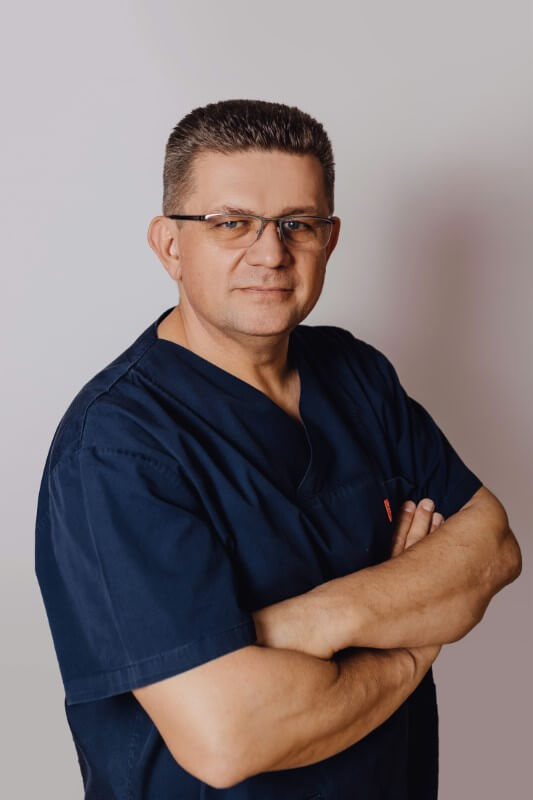
Nenad Škvorc
dr. med.
Spec. ginekologije i opstetricije
Subspec. humane reprodukcije
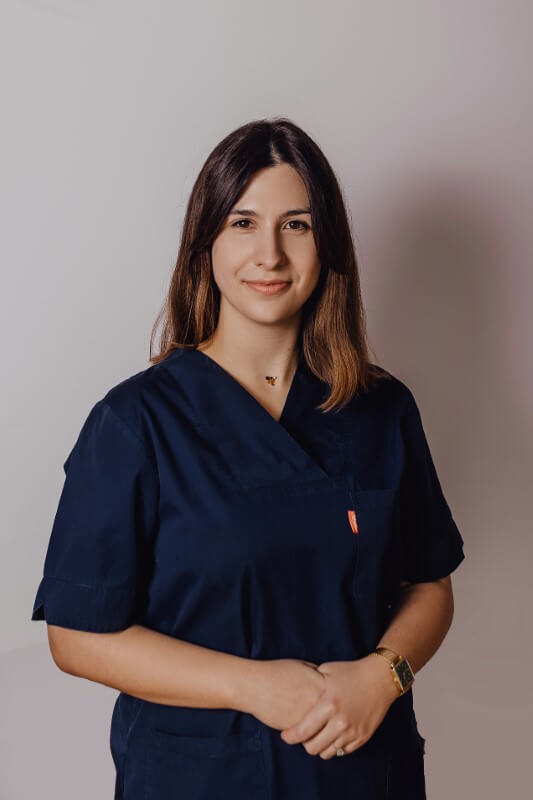
Albina Načkar
univ.mag.biol.mol.
Gordana Planinić Radoš
dr.sc., univ. mag. med.
Spec. ginekologije i opstetricije
Subspec. humane reprodukcije

Lana Zlodi Hršak
dr. med.
Spec. ginekologije i opstetricije
Subspec. humane reprodukcije
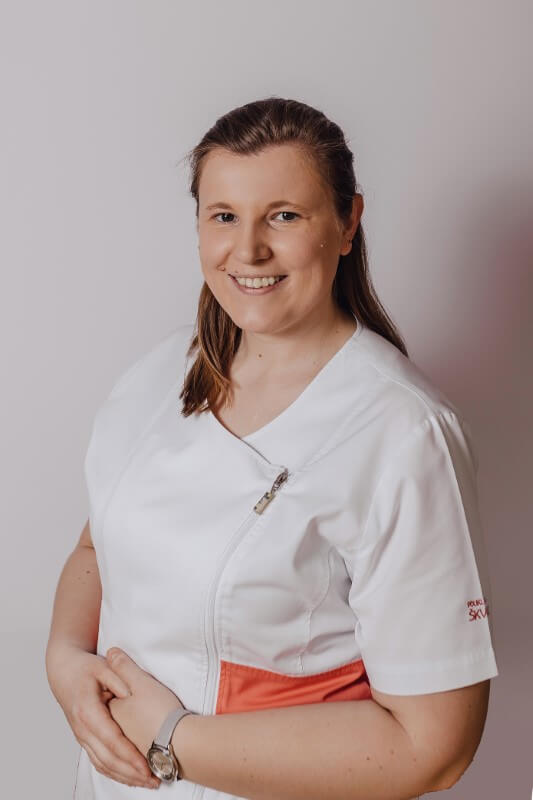
Lucija Belavić
zdravstveno-laboratorijski tehničar

Martina Gašpar Moretić
mag.biol.mol.
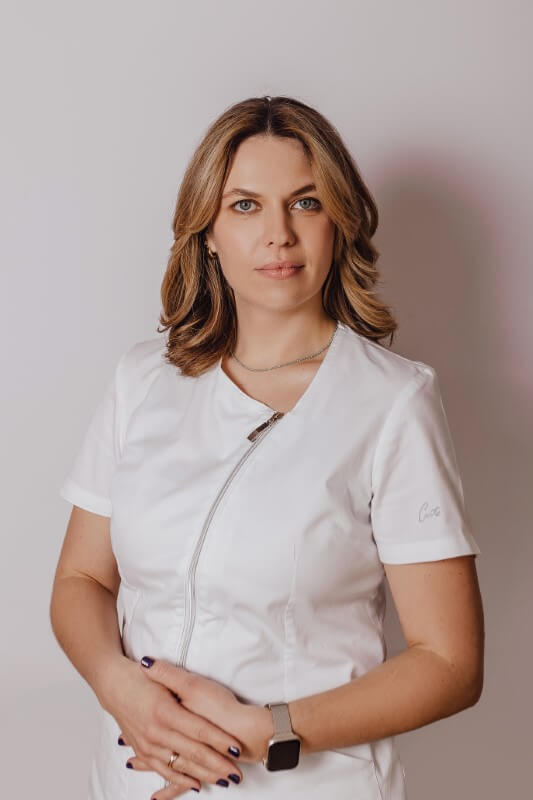
Sonja Šogorić Ševo
mag.biol.mol.
Additional information
Frequently asked questions
- Hormone therapy drugs (clomiphene, Femara) can sometimes cause harmless side-effects, such as headaches, nausea, hot flushes, temporary eyesight problems, bloating, stabbing pain in the lower abdomen or ovarian cysts.
- Hormone therapy injections can cause moderate to significant temporary ovarian enlargement, leading to moderate to strong abdominal pain.
- In rare cases, it can lead to ovarian hyperstimulation, causing strong pain due to fluid build-up in the abdomen and the lungs, resulting in shortness of breath and nausea. It can also lead to fluid build-up in the peripheral tissue (leg and arm oedema), and increase the risk of blood clot formation (thrombosis), which can, in rare cases, lead to embolism. Serious complications may sometimes require hospital treatment.
- Light vaginal bleeding is common in every aspiration, and usually stops after a couple of minutes, with no further treatment needed.
- More severe vaginal bleeding (which is much rarer) requires a tamponade, and sometimes suture.
- Aspiration needles may cause internal injuries (e.g. to blood vessels, bowel, nerves, bladder), with higher risk in patients with distorted anatomy, primarily after previous surgery of pelvic adhesions. In these cases, it is sometimes necessary to perform a surgical procedure (LPSC or laparotomy).
- A bladder injury can lead to blood in the urine, which rarely requires hospital treatment, with no further procedures normally required, and no permanent damage caused.
- Bowel injury may lead to bleeding, infection, and sometimes abdominal inflammation, which requires emergency surgical treatment. Such surgeries may also include bowel resections (extremely rare complication).
- Infections usually take several days to develop, and are treated with antibiotics. More serious infections sometimes require surgical treatment in order to remove pus from the abdominal cavity.
- The use of medications can cause vomiting, dizziness, and nausea after anaesthesia.
- Bruising at the IV site may occur. Rarely, it may cause an inflamed superficial vein.
- Any of the medications used in ART procedures may cause an allergic reaction.
- Aspiration pneumonia may occur when gastric contents are aspirated into the lungs during anaesthesia in case the patient failed to follow recommendations to avoid eating and drinking before going under anaesthesia, and all other anaesthesia-related complications.
- Hormonal treatment, potentially painful procedures, and an uncertain outcome of the ART procedure can affect the mental health of the patient, for which she can seek psychological counselling/therapy.
- For a couple to qualify for CHIF-covered ART procedures, the woman has to be a national of the Republic of Croatia, with valid CHIF basic health insurance, and be under the age of 42.
- Health insurance covers a total of 4 IUI procedures, 2 natural cycle IVF procedures, and 4 stimulated cycle IVF procedures until reaching the age of 42.
- The Polyclinic has a contract with the CHIF only covering IVF procedures.
- There is no prescribed time limit on how long an embryo/egg can be cryopreserved, and the CHIF covers a period of 5 years, after which an annual fee is charged according to the price list of the CHIF, until you decide to perform the FET procedure.
- Beta hCG, a hormone present in the blood already in early pregnancy, can be detected 8 to 10 days after ovulation. To confirm whether the ART procedure has been successful, the beta-hCG blood test is taken 12 to 14 days after the embryo transfer.
If the result is positive, the test is repeated after two days. In a healthy pregnancy, the beta hCG levels should almost double during that time.
